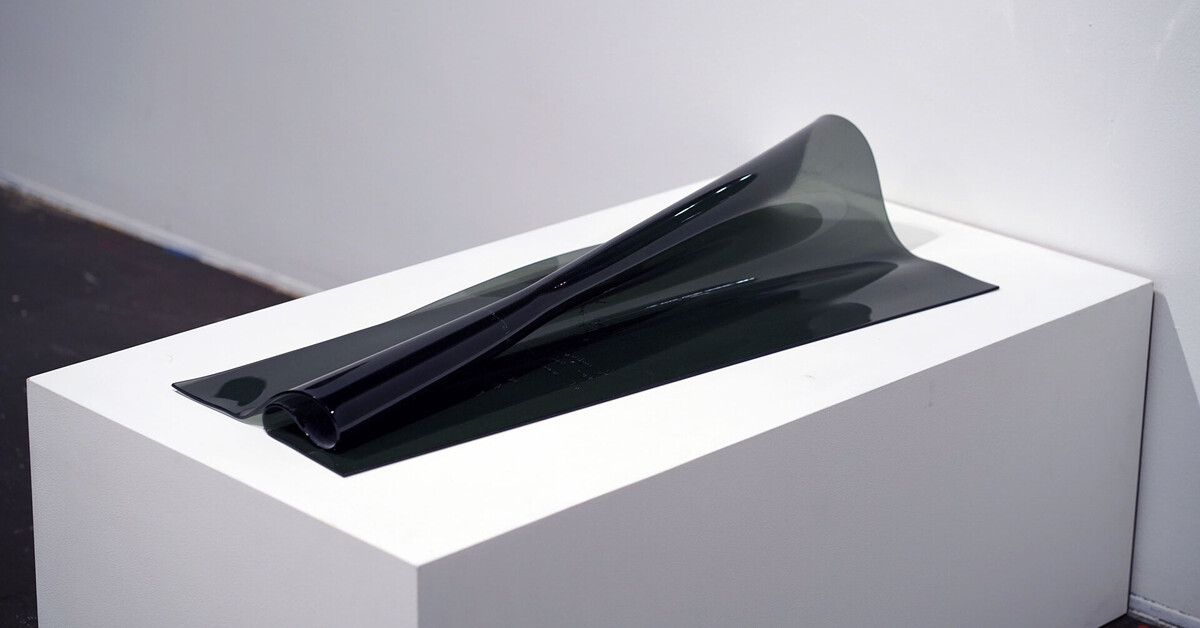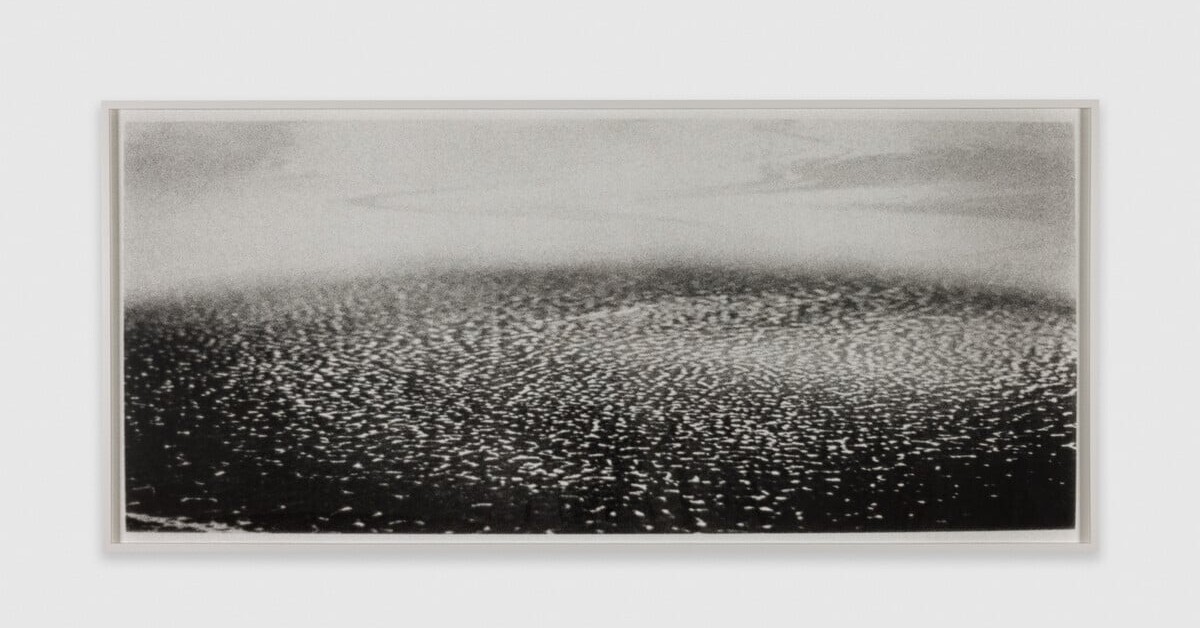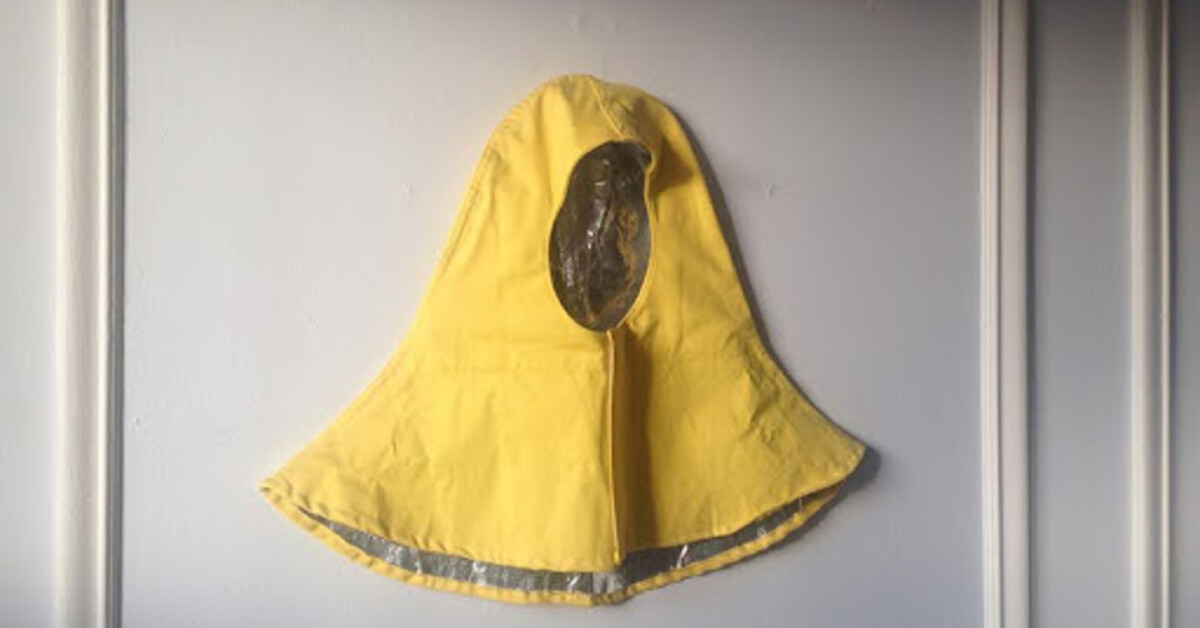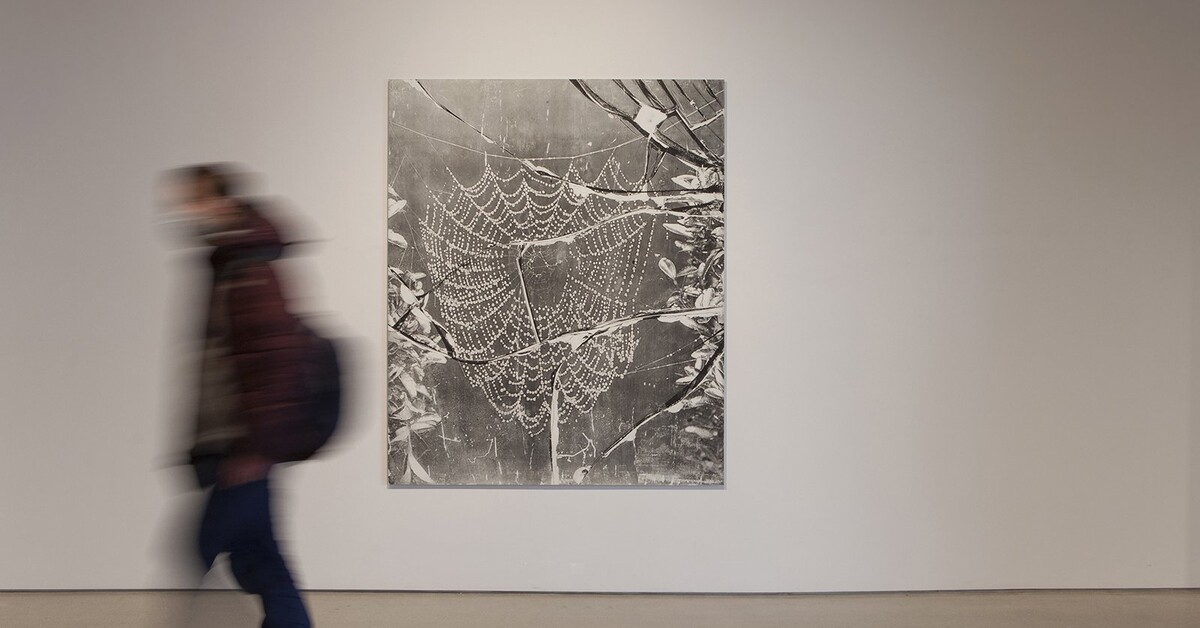The Eye of the Beholder
Minnesota Alumni / by Chris Quirk / Go to Original
Caroline Kent uses her abstract art to reach viewers directly ‘through the senses’.
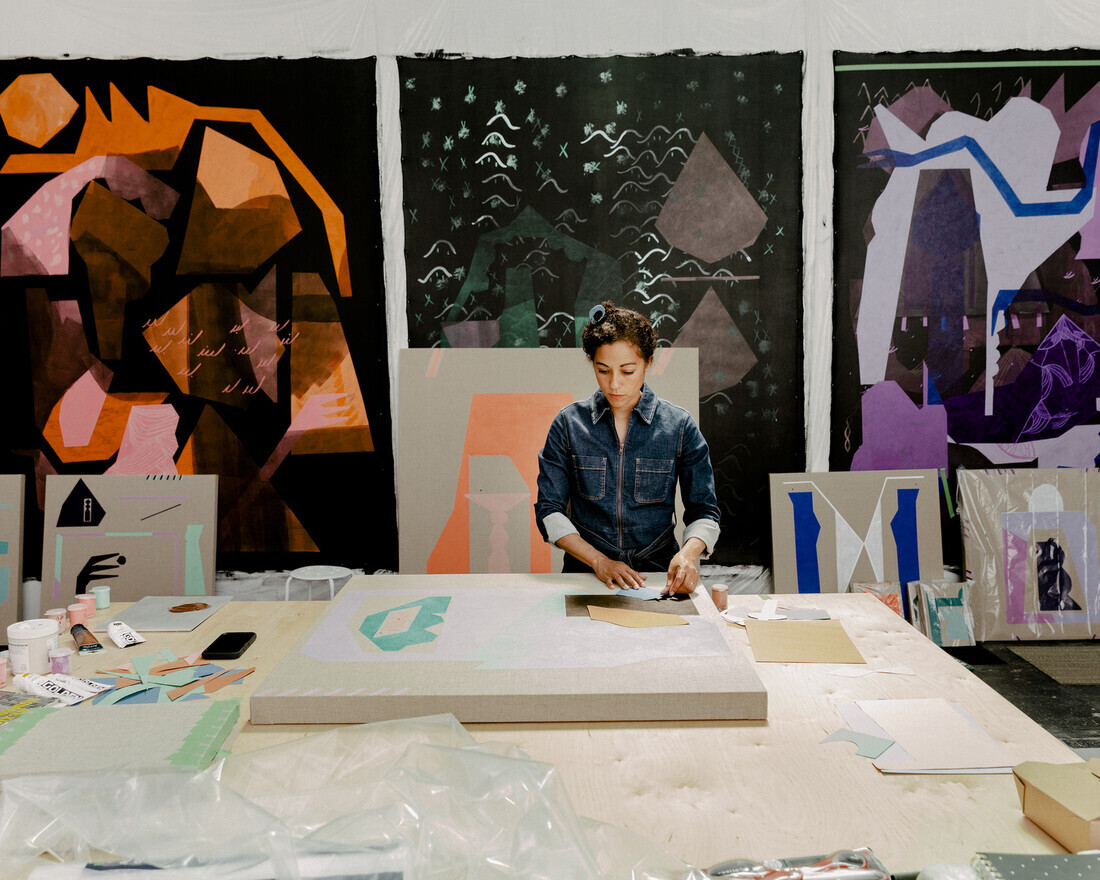
Unlike a lot of artists who seem to have a lifelong inclination to create or render, Caroline Kent (M.F.A. ’08) only discovered her métier in her junior year at Illinois State University in the 1990s, where she’d received a track and field scholarship.
“I want to know this language of art,” said Kent to herself while touring a university art gallery. “I was late to the game and had had two other majors before I became an art major.”
Kent, who describes herself as a child of the Midwest, is now a Chicago-based visual artist and assistant professor of art at Northwestern University. Her evocative abstract work is also increasingly sought after.
Last year, Kent had a solo show at the Casey Kaplan Gallery in New York City, and unveiled a mural, A short play about watching shadows move across the room, which was commissioned by the Queens Museum. She has been profiled in the New York Times Style Magazine, and has exhibited at MoMA, the Guggenheim Museum, and the Museum of Contemporary Art in Chicago, among others.
After graduating from Illinois State, Kent spent two years in the Peace Corps in Romania, where she was inspired by the pastel colors she saw everywhere. She later spent two formative years in the graduate painting program at the U of M, working closely with recently retired David Feinberg on his “Voice to Vision” project, which was a collaborative effort exploring genocide and human rights. Kent recalls learning about empathy, art, and storytelling through it.
“When I saw [Feinberg’s] retrospective exhibition in 2021, I had to smile to myself. His practice had influenced me more than I had realized,” she says. “I suppose it’s a great way to carry someone’s influence with you, for it to manifest in your own practice in a way that is completely your own, but you know where it comes from.”
Visual artist and former U of M Professor Clarence Morgan was also a vital influence and a role model for Kent. “I still find it rare and special that I was able to study under a Black professor who was also an abstract painter,” says Kent, who is herself of Mexican and Black heritage. She says that Morgan’s painting opened vistas for her, and introduced the idea of painting as a practice that takes place across the arc of a lifetime.
Kent also cites fellow abstract artists of color Carmen Herrera and Etel Adnan as lodestars for her work. She told the New York Times that abstract painting is “almost void of Black and brown voices. I want to confront that.”
Today Kent develops her forms through a rich process of exploration and refinement.
“I’m always on the search for new kinds of shapes,” she says. “Many of the shapes come from me cutting out forms and taping them together—making hybrid forms — combining or cutting parts away.” Working on paper allows her to work quickly and rely on her intuition, “discovering new ways of building a picture and juxtaposing solid forms with loose lines. It’s a space where the unexpected can happen.”
Abstract painting, by definition, skirts the boundaries of everyday experience and introduces forms that exist in the gaps between recognizable objects. Kent has chosen the genre for just that quality.
“It has a vast potential to conjure, to evoke, to point to, indicate, obfuscate, or reveal,” she explains. “I find so many interesting possibilities in it as a form of communication. It holds its cards close. It bypasses the familiar representation that people most often relate to and goes right to the senses, and this, for me, is a great space to work in.”
In making her larger paintings, Kent typically begins by stretching raw canvas to the walls, which she then primes with several coats of gesso—an acrylic base that seals the fiber in the canvas. She then begins to develop her forms. “The surfaces are built up, and the shapes I make come from shapes that I cut from paper that are then hand painted onto the canvas,” she says.
Language can also be a key element in Kent’s art, and at times she incorporates words directly in her work. As an identical twin who shared a private language with her sister, Christine Leventhal, growing up, she explored that concept in a multimedia installation, Victoria/Veronica: Making Room, at the Museum of Contemporary Art Chicago in 2021.
“I used the framework of identical twins communicating to one another across time and dimension,” she says. “The show was influenced by my own personal experience as a twin, and how my sister and I communicated. Much of our communication growing up was a kind of twin shorthand.”
Kent says that her art can be a pathway for viewers to take a journey to the unknown. “It’s an opportunity to imaginatively discover, through familiar forms and colors, that which is hidden but presented in a vivid way, a visual mystery.”

Unlike a lot of artists who seem to have a lifelong inclination to create or render, Caroline Kent (M.F.A. ’08) only discovered her métier in her junior year at Illinois State University in the 1990s, where she’d received a track and field scholarship.
“I want to know this language of art,” said Kent to herself while touring a university art gallery. “I was late to the game and had had two other majors before I became an art major.”
Kent, who describes herself as a child of the Midwest, is now a Chicago-based visual artist and assistant professor of art at Northwestern University. Her evocative abstract work is also increasingly sought after.
Last year, Kent had a solo show at the Casey Kaplan Gallery in New York City, and unveiled a mural, A short play about watching shadows move across the room, which was commissioned by the Queens Museum. She has been profiled in the New York Times Style Magazine, and has exhibited at MoMA, the Guggenheim Museum, and the Museum of Contemporary Art in Chicago, among others.
After graduating from Illinois State, Kent spent two years in the Peace Corps in Romania, where she was inspired by the pastel colors she saw everywhere. She later spent two formative years in the graduate painting program at the U of M, working closely with recently retired David Feinberg on his “Voice to Vision” project, which was a collaborative effort exploring genocide and human rights. Kent recalls learning about empathy, art, and storytelling through it.
“When I saw [Feinberg’s] retrospective exhibition in 2021, I had to smile to myself. His practice had influenced me more than I had realized,” she says. “I suppose it’s a great way to carry someone’s influence with you, for it to manifest in your own practice in a way that is completely your own, but you know where it comes from.”
Visual artist and former U of M Professor Clarence Morgan was also a vital influence and a role model for Kent. “I still find it rare and special that I was able to study under a Black professor who was also an abstract painter,” says Kent, who is herself of Mexican and Black heritage. She says that Morgan’s painting opened vistas for her, and introduced the idea of painting as a practice that takes place across the arc of a lifetime.
Kent also cites fellow abstract artists of color Carmen Herrera and Etel Adnan as lodestars for her work. She told the New York Times that abstract painting is “almost void of Black and brown voices. I want to confront that.”
Today Kent develops her forms through a rich process of exploration and refinement.
“I’m always on the search for new kinds of shapes,” she says. “Many of the shapes come from me cutting out forms and taping them together—making hybrid forms — combining or cutting parts away.” Working on paper allows her to work quickly and rely on her intuition, “discovering new ways of building a picture and juxtaposing solid forms with loose lines. It’s a space where the unexpected can happen.”
Abstract painting, by definition, skirts the boundaries of everyday experience and introduces forms that exist in the gaps between recognizable objects. Kent has chosen the genre for just that quality.
“It has a vast potential to conjure, to evoke, to point to, indicate, obfuscate, or reveal,” she explains. “I find so many interesting possibilities in it as a form of communication. It holds its cards close. It bypasses the familiar representation that people most often relate to and goes right to the senses, and this, for me, is a great space to work in.”
In making her larger paintings, Kent typically begins by stretching raw canvas to the walls, which she then primes with several coats of gesso—an acrylic base that seals the fiber in the canvas. She then begins to develop her forms. “The surfaces are built up, and the shapes I make come from shapes that I cut from paper that are then hand painted onto the canvas,” she says.
Language can also be a key element in Kent’s art, and at times she incorporates words directly in her work. As an identical twin who shared a private language with her sister, Christine Leventhal, growing up, she explored that concept in a multimedia installation, Victoria/Veronica: Making Room, at the Museum of Contemporary Art Chicago in 2021.
“I used the framework of identical twins communicating to one another across time and dimension,” she says. “The show was influenced by my own personal experience as a twin, and how my sister and I communicated. Much of our communication growing up was a kind of twin shorthand.”
Kent says that her art can be a pathway for viewers to take a journey to the unknown. “It’s an opportunity to imaginatively discover, through familiar forms and colors, that which is hidden but presented in a vivid way, a visual mystery.”

